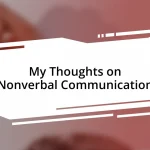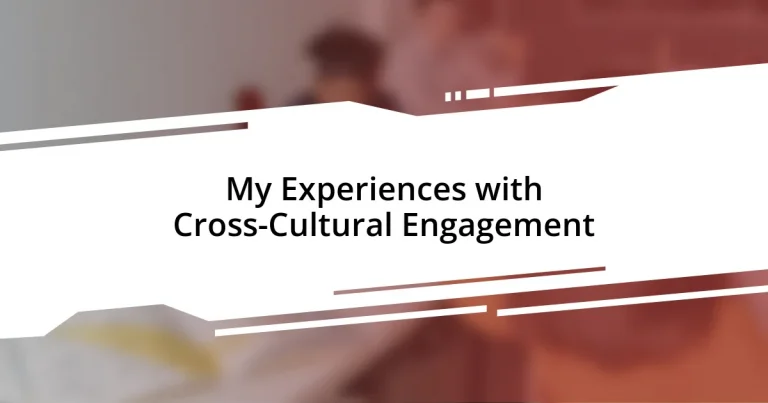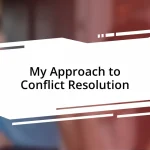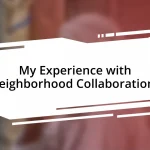Key takeaways:
- Cross-cultural engagement fosters creativity and innovation through diverse perspectives.
- Empathy and active listening are crucial in building deeper connections across cultures.
- Participating in cultural experiences, like festivals and ceremonies, enhances understanding of shared human values.
- Overcoming language barriers can lead to meaningful relationships through creativity and openness.
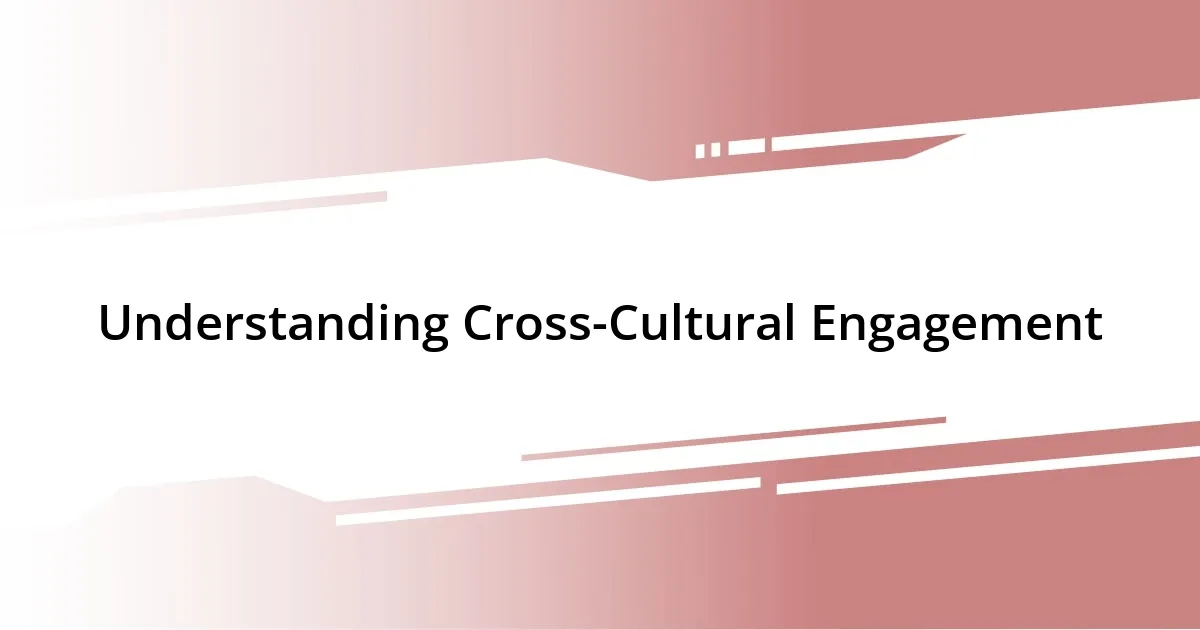
Understanding Cross-Cultural Engagement
Cross-cultural engagement is all about the interactions and exchanges between people from different cultural backgrounds. I still remember the first time I attended a festival celebrating a culture entirely different from my own. The vibrant colors, diverse music, and delicious food created an atmosphere that ignited my curiosity—could this experience teach me something profound about understanding others?
As I delved deeper into cross-cultural scenarios, I realized that the beauty lies in the differences. When I participated in a collaborative project with colleagues from various countries, I felt a mix of excitement and uncertainty. Did we really have enough common ground to succeed? To my surprise, those differences brought creative solutions to the table. It taught me that embracing these cultural nuances can lead to innovation and deeper connections.
What struck me most during these experiences is how empathy plays a crucial role in cross-cultural engagement. I remember sharing a meal with friends from different cultures, and as we exchanged stories while savoring each other’s dishes, I began to feel a sense of belonging. It made me wonder: how can we foster such connections in our daily lives? The answer often lies in simple acts of openness, curiosity, and the willingness to listen.
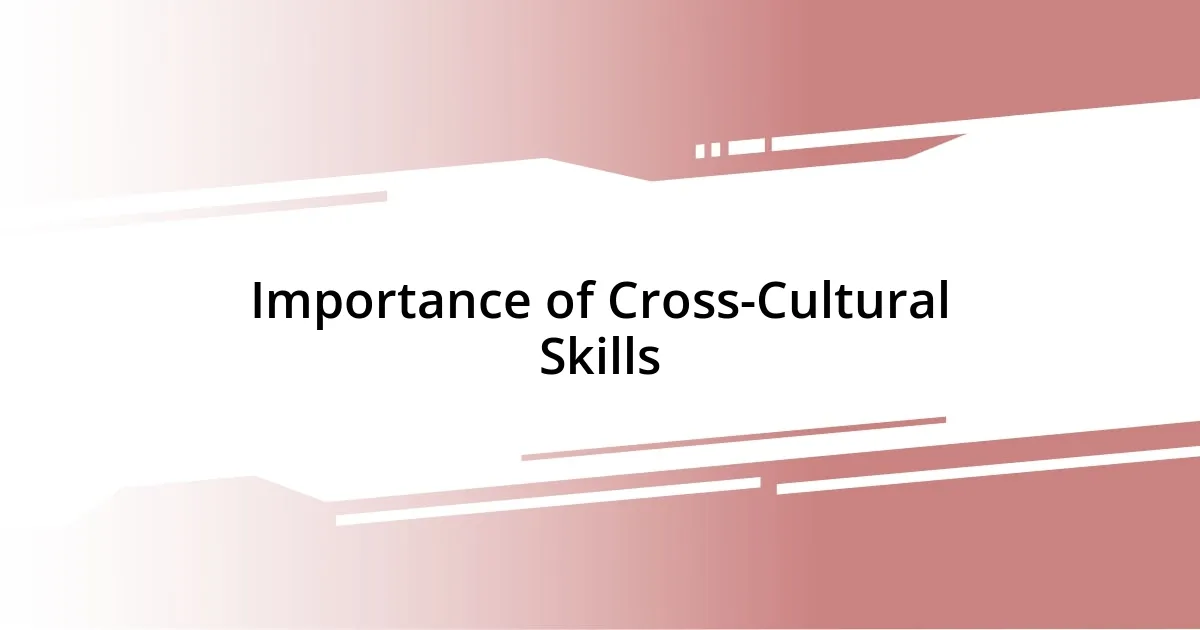
Importance of Cross-Cultural Skills
Cross-cultural skills are essential in today’s interconnected world. From my experience, navigating diverse perspectives can enhance collaboration and foster meaningful relationships. I once worked on a project alongside a colleague from Japan. During our meetings, I noticed how our communication styles differed greatly—he was more indirect, while I tended to be straightforward. This taught me the value of adapting my approach and cultivating patience, ultimately leading to a more productive partnership.
- They help bridge gaps between diverse viewpoints.
- Encouraging empathy can lead to deeper connections.
- They enable creative problem-solving by incorporating varied ideas.
- Such skills are crucial for fostering inclusivity within teams.
- Understanding cultural nuances can significantly improve negotiation processes.
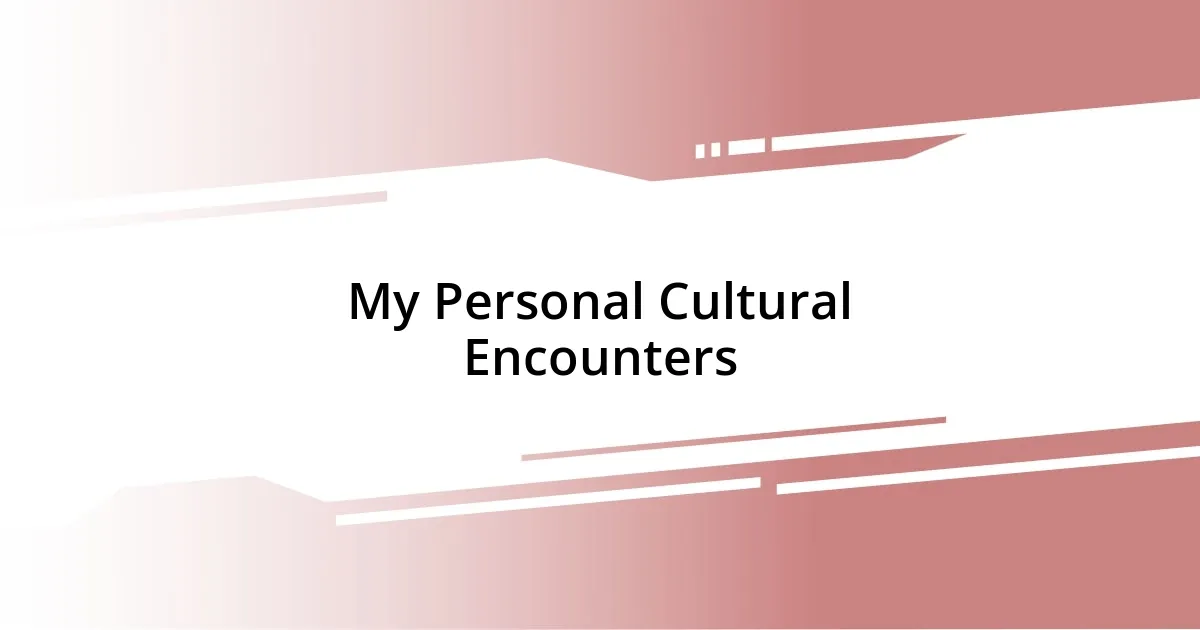
My Personal Cultural Encounters
My experience with cross-cultural encounters has always been transformative. I recall a trip to India, where I was mesmerized by the local customs. Participating in Diwali celebrations made me feel like I was part of something bigger. The joy and warmth of the community were infectious, and I found myself connecting with strangers in ways I never anticipated.
Another memorable moment was a cultural exchange program in Spain. While sharing traditional meals, I felt the common bond of humanity. The stories behind each dish revealed not only cultural differences but also shared values. This made me reflect on how food can be a powerful tool for connection. Potluck dinners with friends from various backgrounds have become a cherished tradition for me, fostering a sense of openness and enthusiasm.
Lastly, working with a team from Latin America opened my eyes to the significance of festivals in their culture. They invited me to join in celebrating Día de los Muertos, a festive yet reflective occasion. The way they honored their deceased was beautiful and humbling. It reminded me that our differences often hold deep meaning, paving the way for a richer understanding of the world around us.
| Cultural Encounter | Key Insights |
|---|---|
| Diwali in India | Experience of community joy and warmth |
| Spanish Cultural Exchange | Food as a connection tool |
| Día de los Muertos in Latin America | Understanding of cultural traditions and their meanings |
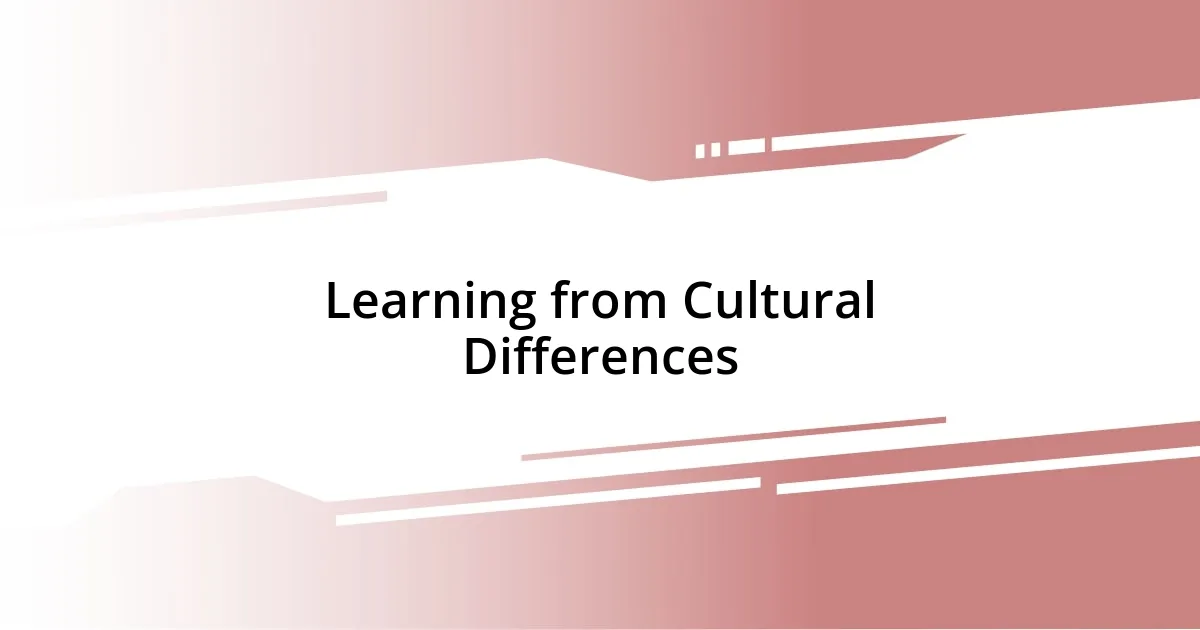
Learning from Cultural Differences
Diving into cultural differences has profoundly shaped my understanding of the world. I remember a conversation I had with a colleague from Nigeria about the concept of time. While I viewed punctuality as a must, he shared that, in his culture, relationships often took precedence over strict schedules. This sparked a revelation: what can I learn from allowing flexibility in my own life? Embracing this perspective not only enhanced our teamwork but also taught me the beauty of prioritizing connections over clock-watching.
Then there was my experience attending a traditional wedding in Greece. The celebrations lasted for days, filled with laughter, music, and a sense of community that enveloped everyone present. I often reflect on the difference between that approach to celebrations and the more subdued events I grew up attending. It made me wonder—what richness do we miss when we adhere too rigidly to our own cultural norms? This exploration reinforced my belief that engaging with diverse customs can open our hearts to experiences that deepen our joy.
One of the most striking lessons I learned came during my interaction with a group of indigenous artisans in Peru. As they shared their craft and the stories behind their art, I felt a profound respect for their profound connection to the land and their ancestors. It made me question my own ties to tradition. Their way of creating wasn’t just about the finished product; it was about honoring history and identity. What if we all approached our passions with such intention? Those moments of connection and understanding truly changed the way I see different cultures, inspiring me to search for deeper meanings in my own practices.
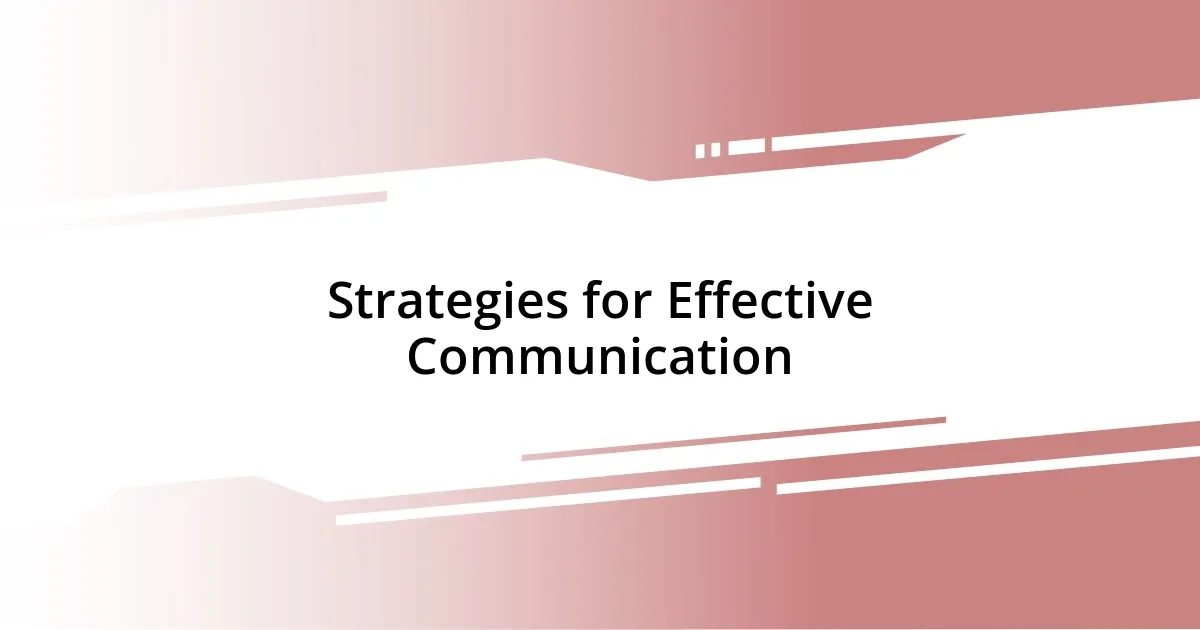
Strategies for Effective Communication
Navigating cross-cultural communication can feel daunting, but I’ve found that active listening is a game changer. In a discussion with a friend from Japan, I made a conscious effort to pause and reflect on what she was saying, rather than preparing my response while she spoke. This approach not only deepened our conversation but also allowed me to appreciate the nuances in her perspective. Have you ever noticed how simply listening can transform an interaction? It’s remarkable how much you can learn when you’re truly present.
I also believe in the value of asking open-ended questions. During a community event with speakers from various backgrounds, I found that questions like “How does your culture celebrate milestones?” sparked richer discussions than a simple “Do you celebrate at all?” Those deeper inquiries invited stories that illuminated nuances of joy and challenge in ways I never expected. It really makes me appreciate how communication can unfold layers of understanding.
Finally, body language plays a crucial role, often conveying emotions that words can’t quite capture. I remember attending a vibrant festival where my lack of fluency in the local language was overshadowed by shared smiles, laughter, and gestures. It was a perfect reminder that connection goes beyond verbal exchanges. Have you experienced that feeling when a mere smile can bridge the gap between two different worlds? I was profoundly moved, realizing how our non-verbal communication could ignite bonds that transcended language barriers.
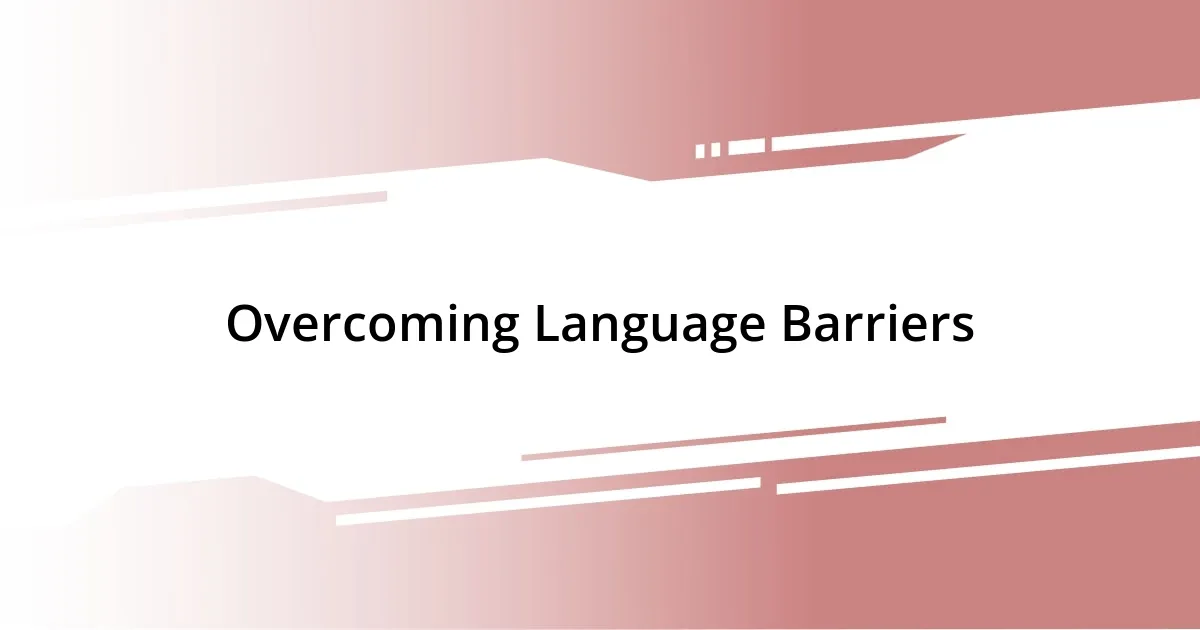
Overcoming Language Barriers
Overcoming language barriers can be both a challenge and an opportunity for growth. I vividly recall a dinner I attended in Brazil where English was not the primary language spoken. Despite the communication hurdles, I was immersed in a colorful exchange through animated hand gestures and laughter. It made me realize that when words fall short, creativity takes over. Have you ever felt that sense of camaraderie in the midst of misunderstandings? I found that humor often served as the universal bridge, bringing us together more than any language could.
In another instance, while volunteering at a multicultural event, I encountered individuals who spoke a range of languages. I quickly learned that using simple phrases and a touch of patience was crucial. I remember feeling a rush of excitement when a woman from Syria, who spoke limited English, smiled and thanked me in her native tongue. That moment was more than just a polite exchange; it felt like a genuine connection, proving that effort transcends language. Isn’t it interesting how a small gesture can lead to meaningful relationships across cultures?
Ultimately, I believe that embodying a spirit of curiosity is key to overcoming these barriers. During a trip to Thailand, I joined a cooking class where the instructor spoke minimal English. Yet, every interaction was filled with enthusiasm and kindness. I mirrored her actions, chopping vegetables and stirring sauces while she guided me with a smile. Each moment was a lesson not just in culinary skills but in embracing the beauty of learning through experience—how often do we hold back from trying something new because of fear? I realized that overcoming language barriers is about more than words; it’s about connecting with others on a deeper level.
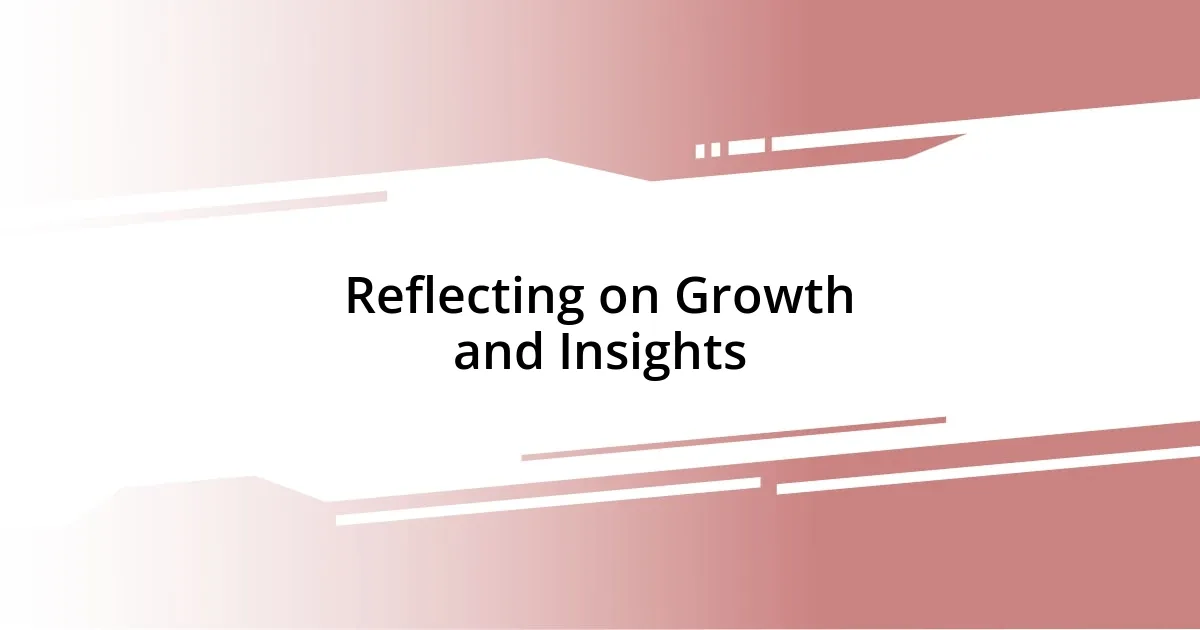
Reflecting on Growth and Insights
Reflecting on my experiences, I’ve come to understand that cross-cultural engagement often leads to profound personal growth. After returning from a seven-week journey in Southeast Asia, I was left not only with delightful memories but a deeper awareness of my own cultural biases. I remember sitting in a café, sipping on local coffee, when it hit me: understanding different perspectives had transformed the way I view my own culture. Have you ever felt that shift within yourself when immersed in a new environment?
There was a moment during my travels when I participated in a traditional family ceremony in Vietnam that truly encapsulated this transformation. As I watched the intricate rituals unfold, I realized how each element held deep significance, revealing layers of meaning I hadn’t considered before. This experience made me ponder: isn’t it fascinating how we often overlook the beauty in our own traditions until we see them through the lenses of others? It felt like a mirror, reflecting my values while highlighting the beauty of different practices.
Since then, I’ve noticed a shift in my approach to conversations—with a newfound empathy and openness to learning. For instance, during a recent discussion with a colleague from Ghana, I found myself not just listening but genuinely seeking to understand the roots of his cultural beliefs. It’s incredible how these interactions have shaped my worldview, urging me to ask, “What can I learn from this person’s journey?” Each encounter has become an opportunity for insight, driving home the realization that growth often arises from our willingness to embrace the unfamiliar.











